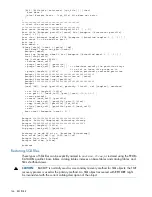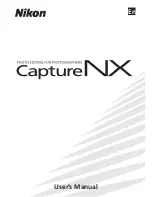
on compiling SQL program files, see the SQL/MP Programming Manual for C and the SQL/MP
Programming Manual for COBOL.
•
If you use the SQLCOMPILE ON option during a RESTORE process of a program file that is
not sensitive to SQL, the file is restored but not as a program that is sensitive to SQL.
SQLTAPEPARTARRAY
The SQLRAPEPARTARRAY option makes RESTORE update all partitions of the target object with
the partition array from the tape, and makes RESTORE recover data for the target partition.
SQLTAPEPARTARRAY
Guidelines
•
Use this option when the SQL partition array has been corrupted online and a valid partition
array exists on a backup tape. The online partition array is not saved and cannot be recovered
unless it has been saved using BACKUP.
•
No warning messages are displayed to indicate this option is in use.
•
The default behavior of the PARTONLY option was changed in T9074ADA to use a current
SQL partition array off of disk for recovery instead of the partition array on the backup tape.
This is the correct action for most situations where the object's DDL has changed since the
backup was made. This effort was referred to as Label Fixup. In rare cases, users have corrupted
the SQL partition array on disk and needed to recover using a backup tape with the correct
DDL. This option turns off the Label Fixup modifications and uses the partition array from tape.
START
The START option indicates where in the
restore-files
the RESTORE process is to begin. You
must give a specific file name where the RESTORE process should start.
START [$volume.][subvolume.]file-id
volume.subvolume.file-id
indicates the volume, subvolume, and file where you want the RESTORE process to begin
restoring files. RESTORE uses the current volume and subvolume if
volume
and
subvolume
are omitted.
Guidelines
•
The file specified with the START option must be referenced in
restore-files
.
•
Specify the file set like any other file set in a RESTORE command. You can use the asterisk
wild card only to represent a whole subvolume name or file ID, such as:
$volume.subvolume.*
or
$volume.*.*
but not
$volume.subvolume.AA*
•
The START option works the same as the START qualifier in a qualified file set.
Example
To begin the RESTORE process at the file MAC2 on the current subvolume:
1> RESTORE $TAPE, *.*.*, START MAC2
154 RESTORE
















































